Airfix 1/72 L-19 Bird Dog
|
KIT #: |
1058 |
|
PRICE: |
$5.75 last time it was released
|
|
DECALS: |
Three options |
|
REVIEWER: |
Carmel
J. Attard |
|
NOTES: |
Pavla upgrade sets used. |
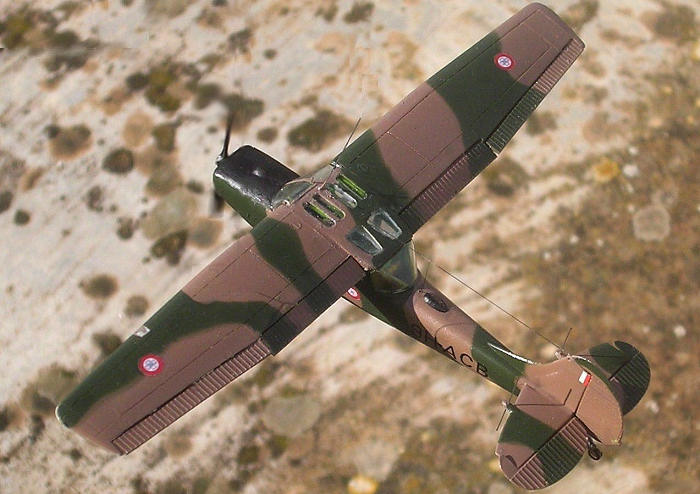
The Cessna L-19 Bird Dog was
developed from Model 170, a lightweight strut based high-wing monoplane for
liaison and observation duties with the USAF. Deliveries of production aircraft
began in December 1950 under the designation L-19A and with the name Bird Dog.
By October 1954 2,486 had been delivered of which 60 went to the
US
Marine Corps with designation OE-1. Several versions continued to evolve with
the final one being the improved L-19E of higher gross weight to bring the total
production of Bird Dogs to 3,431. With redesignation in 1962 the
US
Army L-19A, TL-19D and L-19E aircraft became O-1A. Bird
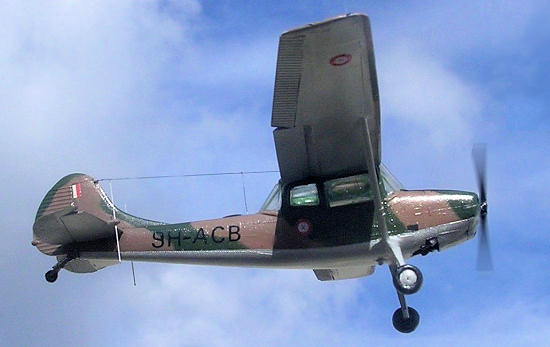 Dogs
operated in small numbers during the Korean War, but the
US
Air Force acquired many of the US Army’s O-1s for use by Forward Air Controllers
in
Vietnam.
Target marker rockets were mounted under each wing for these FAC missions
throughout the war. In addition to being supplied to many nations the O-1s were
also built under licence by
Fuji
in
Japan.
Dogs
operated in small numbers during the Korean War, but the
US
Air Force acquired many of the US Army’s O-1s for use by Forward Air Controllers
in
Vietnam.
Target marker rockets were mounted under each wing for these FAC missions
throughout the war. In addition to being supplied to many nations the O-1s were
also built under licence by
Fuji
in
Japan.
The aircraft has been
in widespread service for quite a time and therefore the scale modeler has a
wide variety of colorschemes and markings from which to choose. An Air Arm which
continued to use the L-19 Bird Dog is that of Malta Air Squadron which was with
the acquisition of its first fixed wing aircraft. Previous to that it was the
Helicopter Flight wing. The Italian AF at Viterbo donated five Cessna O-1E.
The Italians gave flying Training and technical instructions as part of
the deal. The five L-19s arrived in
Malta
on
2nd February 1992.
These were ex-Italian Army and were registered in May 14th as 9H-ACA,
-ACB, -ACC, -ACD, -ACE. These had previous Italian registration written in small
numeral in white at an area under the trail plane. E.g. 9H-ACC was 61-2986,
9H-ACD was 61-2990. In due course in the year 2,000 the civil Maltese
registration was again altered and L-19 ex- 9H-ACD became AS209 etc.
Apart from the sudden
expansion in assets, the Air Squadron had to invest also in newly trained pilots
so that by the end of April 1993 the AFM had 9 qualified pilots in its squadron
that also included one female pilot. L-19 9H-ACB suffered one of the number of
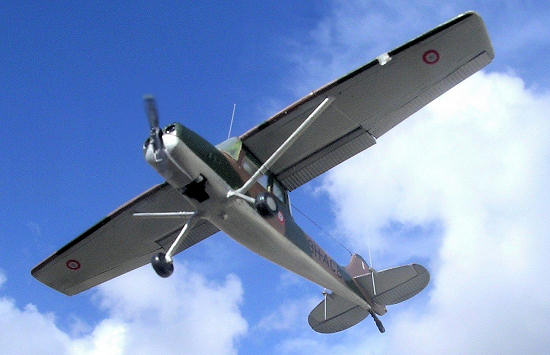 accidents
when it swirled violently on landing which resulted in damage to the starboard
wing and tail plane and shearing off the main starboard undercarriage. This is
now on permanent loan to the
Malta
Aviation
Museum
at Ta’ Qali. The new military serial for all the L-19s are as follows:
accidents
when it swirled violently on landing which resulted in damage to the starboard
wing and tail plane and shearing off the main starboard undercarriage. This is
now on permanent loan to the
Malta
Aviation
Museum
at Ta’ Qali. The new military serial for all the L-19s are as follows:
9H-ACA….AS9206
9H-ACB …AS9207
9H-ACC….AS9208
9H-ACD….AS9209
9H-ACE….AS9210
All L-19s have now been phased out
of service being supplanted by Alouette IIIs and Bulldogs.
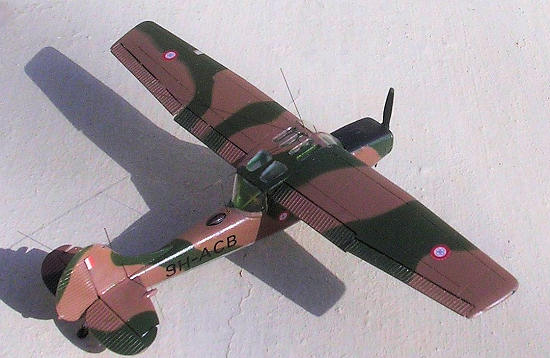 Reissue
of the Airfix Bird Dog is again intended to depict an aircraft in the markings
of units engages as Forward Air Control during the Vietnam war. There is an O-1F
of USAF in late 60s during the
Vietnam
conflict, alternatively one can go for an O-1E as operated by the
Vietnam
Republic
Air Force during same conflict. There is a third option, which is totally new
with the reissue kit for an overall olive green L-19 of No 10 Tactical Air Group
Mobile
Command of the Canadian Armed Forces in 1974. The kit having nicely detailed
panel lines and rivets not detracting from the look of the finished model. The
use of centre wing panels, which fit into a complete wing section approach,
makes for correct thin leading edges of the wings. While construction is
straightforward and the assembly drawings are clear enough to determine exact
location of parts, the Airfix Bird Dog can be mush enhanced in detail by
addition of highly detailed interior parts, separate control surfaces that Pavla
Models provides in brown colored resin. A long aerial above the central wing and
shorter aerials attached to tail plane fairings at leading edges will add more
authenticity to the model.
Reissue
of the Airfix Bird Dog is again intended to depict an aircraft in the markings
of units engages as Forward Air Control during the Vietnam war. There is an O-1F
of USAF in late 60s during the
Vietnam
conflict, alternatively one can go for an O-1E as operated by the
Vietnam
Republic
Air Force during same conflict. There is a third option, which is totally new
with the reissue kit for an overall olive green L-19 of No 10 Tactical Air Group
Mobile
Command of the Canadian Armed Forces in 1974. The kit having nicely detailed
panel lines and rivets not detracting from the look of the finished model. The
use of centre wing panels, which fit into a complete wing section approach,
makes for correct thin leading edges of the wings. While construction is
straightforward and the assembly drawings are clear enough to determine exact
location of parts, the Airfix Bird Dog can be mush enhanced in detail by
addition of highly detailed interior parts, separate control surfaces that Pavla
Models provides in brown colored resin. A long aerial above the central wing and
shorter aerials attached to tail plane fairings at leading edges will add more
authenticity to the model.
To begin with I opted
to build the L-19 as operated by the fixed wing of the Armed Forces of
Malta
during the time it was in service in the 90s. The under wing smoke rockets and
racks were deleted. I made good use of the Pavla sets C72-079 and U72-104. The
former dealt with cockpit interior including new resin seats, side of cabin with
all its details, floor instrument panel and I
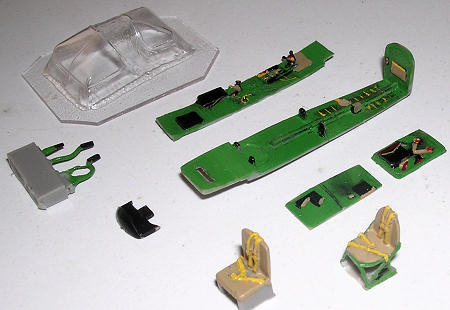 also
added strengthening brackets inside the cockpit forward and aft. The set also
had a clear vac canopy for front and back. The starboard door can be assembled
in the open position so that the detail on the interior could be more visible. I
opted to keep the doors closed and the clear canopies that I used still allowed
the detail to be observed from the outside. The finely engraved resin instrument
panel and accurate control sticks added to this detail. Many of these interior
items replaced the kit parts. Pavla set 72-104 consisted of wing control
surfaces and accurate pair of wheels, which are the right size since the Airfix
ones, were small in diameter and having thin section. Color details were also
given for all the resin detail parts.
also
added strengthening brackets inside the cockpit forward and aft. The set also
had a clear vac canopy for front and back. The starboard door can be assembled
in the open position so that the detail on the interior could be more visible. I
opted to keep the doors closed and the clear canopies that I used still allowed
the detail to be observed from the outside. The finely engraved resin instrument
panel and accurate control sticks added to this detail. Many of these interior
items replaced the kit parts. Pavla set 72-104 consisted of wing control
surfaces and accurate pair of wheels, which are the right size since the Airfix
ones, were small in diameter and having thin section. Color details were also
given for all the resin detail parts.
In
brief the sequence of construction entailed the following:
1)
Separations of the tail wheel from
the kit lower rudder area, which was then fixed to the resin rudder issued in
the set. This had a tiny shallow slot so that the tail wheel will register in
it. The resin rudder had trim tab detail and more pronounced surface spars
detail making them appear more realistic.
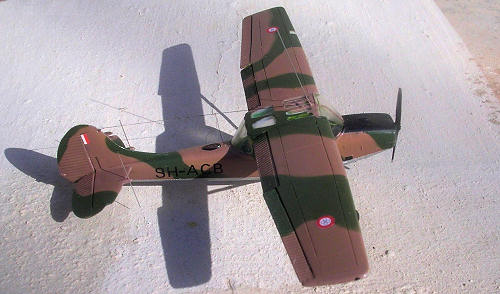 2)
Mold ejector pin markings which
spoil the kit fin part was removed by filing down, similar surface marks were
removed from lower wing by smoothening down so that the lower wing control
inserts could fit properly.
2)
Mold ejector pin markings which
spoil the kit fin part was removed by filing down, similar surface marks were
removed from lower wing by smoothening down so that the lower wing control
inserts could fit properly.
3)
New
resin elevators replaced the kit ones as they were in greater detail as well as
absence of ejector pin marks. The kit elevators were sliced away from tail plane
using X-acto
saw blade. The new elevators were set at a slightly lowered angle.
4)
Port and starboard fuselage had
detail on the inside removed as well as the section thickness reduced
by scraping as the soft kit
plastic on the inside was easily manageable. The new resin side panels were then
fitted using super glue.
5)
The rectangular side cabin windows
were cut from thin clear acetate and fitted in place fixing them with Klear
(Future) liquid.
6)
New resin flaps and elevators were
fixed at a slightly lowered angle.
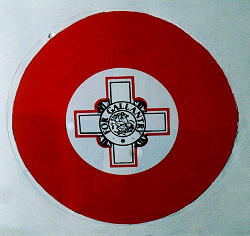 Interior
was cockpit green and details on instruments were mainly black while seat straps
were khaki. The AFM L-19 had
silver undersides of fuselage and wings while the upper surface disruptive
camouflage was dark earth and dark green. The shade of green varied subject to
weathering. Luckily I found ‘Letraset’ black lettering of the correct size. For
the Malta Armed Forces roundel, my colleague aircraft modeller Gordon Zammit
came to the rescue and printed a set of decals in time for my L-19. These were
of two different sizes and consisted of a red outer circle with white centre
having a George Cross superimposed over the white at centre. The civil
registration was eventually replace with a serial number as indicated above. A
Maltese flag appears on the tail fin. Prior to application of decals the kit was
given a coat of Klear. In the end the model was given an overall coat of Model
Master semi gloss lacquer.
Interior
was cockpit green and details on instruments were mainly black while seat straps
were khaki. The AFM L-19 had
silver undersides of fuselage and wings while the upper surface disruptive
camouflage was dark earth and dark green. The shade of green varied subject to
weathering. Luckily I found ‘Letraset’ black lettering of the correct size. For
the Malta Armed Forces roundel, my colleague aircraft modeller Gordon Zammit
came to the rescue and printed a set of decals in time for my L-19. These were
of two different sizes and consisted of a red outer circle with white centre
having a George Cross superimposed over the white at centre. The civil
registration was eventually replace with a serial number as indicated above. A
Maltese flag appears on the tail fin. Prior to application of decals the kit was
given a coat of Klear. In the end the model was given an overall coat of Model
Master semi gloss lacquer.
The L-19 was a common
sight flying across the Maltese archipelago sky mostly flying at relatively low
altitude with the characteristic engine sound telling the type long before it
comes into view. It made local history as it was the first fixed wing type to
equip the MAF.
The resin set issued
by Pavla Models is highly recommended for use with the Airfix kit and with some
care a very pleasing model will result.
Malta Flypast magazine issued by
the Malta Aviation Museum .
Carmel J. Attard
November 2011
If you would like your product reviewed fairly and
fairly quickly, please
contact
me or see other details in the
Note to
Contributors.
Back to the Main Page
Back to the Review
Index Page


 Dogs
operated in small numbers during the Korean War, but the
Dogs
operated in small numbers during the Korean War, but the  accidents
when it swirled violently on landing which resulted in damage to the starboard
wing and tail plane and shearing off the main starboard undercarriage. This is
now on permanent loan to the
accidents
when it swirled violently on landing which resulted in damage to the starboard
wing and tail plane and shearing off the main starboard undercarriage. This is
now on permanent loan to the  Reissue
of the Airfix Bird Dog is again intended to depict an aircraft in the markings
of units engages as Forward Air Control during the Vietnam war. There is an O-1F
of USAF in late 60s during the
Reissue
of the Airfix Bird Dog is again intended to depict an aircraft in the markings
of units engages as Forward Air Control during the Vietnam war. There is an O-1F
of USAF in late 60s during the  also
added strengthening brackets inside the cockpit forward and aft. The set also
had a clear vac canopy for front and back. The starboard door can be assembled
in the open position so that the detail on the interior could be more visible. I
opted to keep the doors closed and the clear canopies that I used still allowed
the detail to be observed from the outside. The finely engraved resin instrument
panel and accurate control sticks added to this detail. Many of these interior
items replaced the kit parts. Pavla set 72-104 consisted of wing control
surfaces and accurate pair of wheels, which are the right size since the Airfix
ones, were small in diameter and having thin section. Color details were also
given for all the resin detail parts.
also
added strengthening brackets inside the cockpit forward and aft. The set also
had a clear vac canopy for front and back. The starboard door can be assembled
in the open position so that the detail on the interior could be more visible. I
opted to keep the doors closed and the clear canopies that I used still allowed
the detail to be observed from the outside. The finely engraved resin instrument
panel and accurate control sticks added to this detail. Many of these interior
items replaced the kit parts. Pavla set 72-104 consisted of wing control
surfaces and accurate pair of wheels, which are the right size since the Airfix
ones, were small in diameter and having thin section. Color details were also
given for all the resin detail parts.
